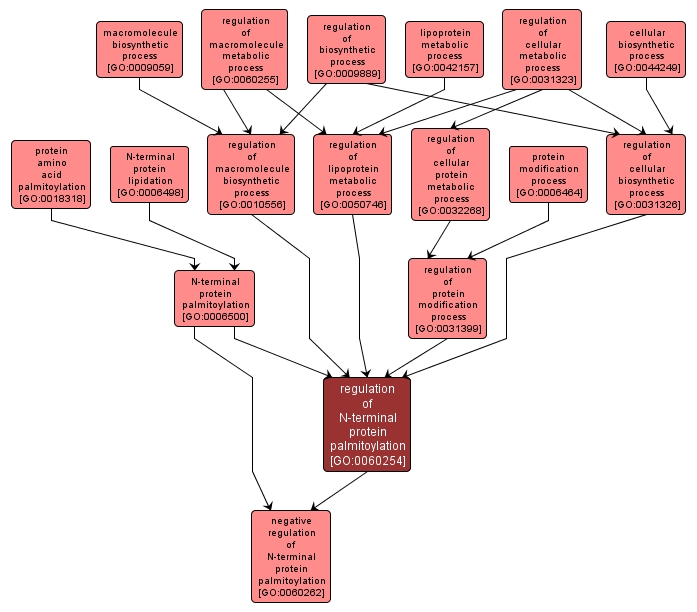GO TERM SUMMARY
|
| Name: |
regulation of N-terminal protein palmitoylation |
| Acc: |
GO:0060254 |
| Aspect: |
Biological Process |
| Desc: |
Any process that modulates the rate frequency or extent of the covalent or non-covalent attachment of a palmitoyl moiety to the N-terminal amino acid residue of a protein. |
|

|
INTERACTIVE GO GRAPH
|














